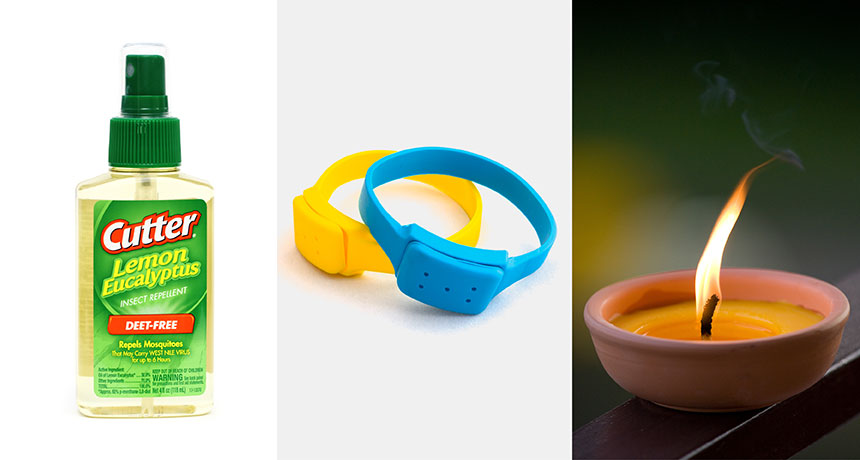Spray-on mosquito repellents are more effective than other devices

Mosquitoes are more than an itchy nuisance. They can carry serious diseases, including Zika, West Nile, yellow fever and chikungunya. Now after testing 11 types of mosquito repellents, researchers say they’ve identified the products most effective at warding off the bloodsuckers.
Spray-on repellents with DEET or a refined tree extract called oil of lemon eucalyptus are most likely to keep you bite-free, the scientists report online February 16 in the Journal of Insect Science. The OFF! Clip-On repellent, which puffs out a vapor of the chemical metofluthrin, killed every mosquito in the cage. But Hansen says the mosquitoes couldn’t escape, so they probably got a higher dose than they would in a natural setting.
Other tested repellents such as a citronella candle simply don’t work, says study coauthor Immo Hansen, an insect physiologist at New Mexico State University in Las Cruces.
“There are a whole lot of different products out on the market that are sold as mosquito repellents, and most of them haven’t ever been tested in a scientific setting,” Hansen says.
To evaluate the repellents, the researchers used a person, safely protected from bites, as “bait.” The volunteer sat in a wind tunnel as her alluring scent — and repelling chemicals — were pulled toward a cage of Aedes aegypti mosquitoes.
The three-compartment cage allowed the mosquitoes to move toward or away from the volunteer. After 15 minutes, the researchers determined the portion of mosquitoes that had moved into the compartment closest to the volunteer.
Three deterrents did little to dissuade the insects: bracelets with geraniol oil, a sound machine that buzzes like a dragonfly and a citronella candle (which appeared to slightly attract the mosquitoes). Burning a candle releases carbon dioxide, which might have drawn the mosquitoes, which home in on a human meal by sensing exhaled CO2 (SN: 3/18/17, p. 10).
Repellents face-off
Researchers measured attraction rates of A. aegypti mosquitoes to a person one meter or three meters away who was wearing or seated next to the repellent. Attraction rates are the percentage of total mosquitoes, averaged over four tests, that flew toward the person.
These repellents were not significantly different from the no-repellent control: bracelets (Mosquito-NO!, Invisaband, Mosquitavert), Cutter Citro Guard candle and Personal Sonic Mosquito Repeller.